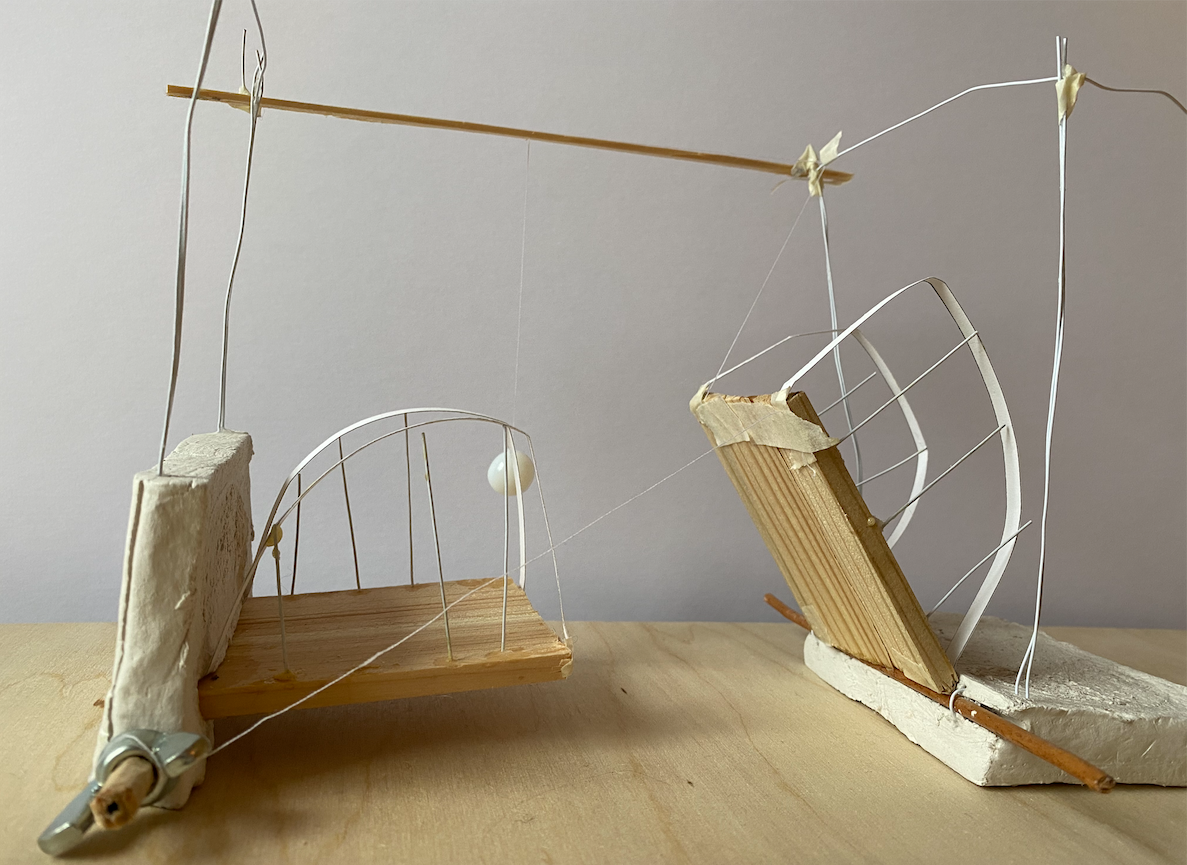

Designing the drawbridge, I needed first to understand how the draw bridge would work. I created sketches and looked towards ancient castle drawbridge designs. However, I flipped the design on its head since instead of always being a 'closed' bridge that was down all the time, I wanted it to be open so that users would have to communicate to draw it 'closed' when they needed to cross. This required, as shown in my sketch, a bridge on a hinge, a steel wire attached to the foot of the bridge, which was also pulled above and back towards the wall attachment. This would then travel to a central wire that dropped down with a counterweight on the end so that the bridge would always naturally lift up and open, unless otherwise directed so. A separate steel wire would be at the foot of the bridge going down, spanning across floors and attached to a wheel, so that the wheel could be turned in order to draw the bridge down for pedestrian use. To test my concept, I created a working model of the drawbridge design I had created. I also created a mood board to express the way I would visually want this to appeal to my users and fit into my design. I looked towards minimalist steel wheels, chains, and a huge feature counter weight in the form of a chunk of rock - local to the city of Winchester, chalk. The mood board expressed the different ways in which this rock could be suspended, and I considered it to have engravings of quotes appropriate to the motives of my scheme.